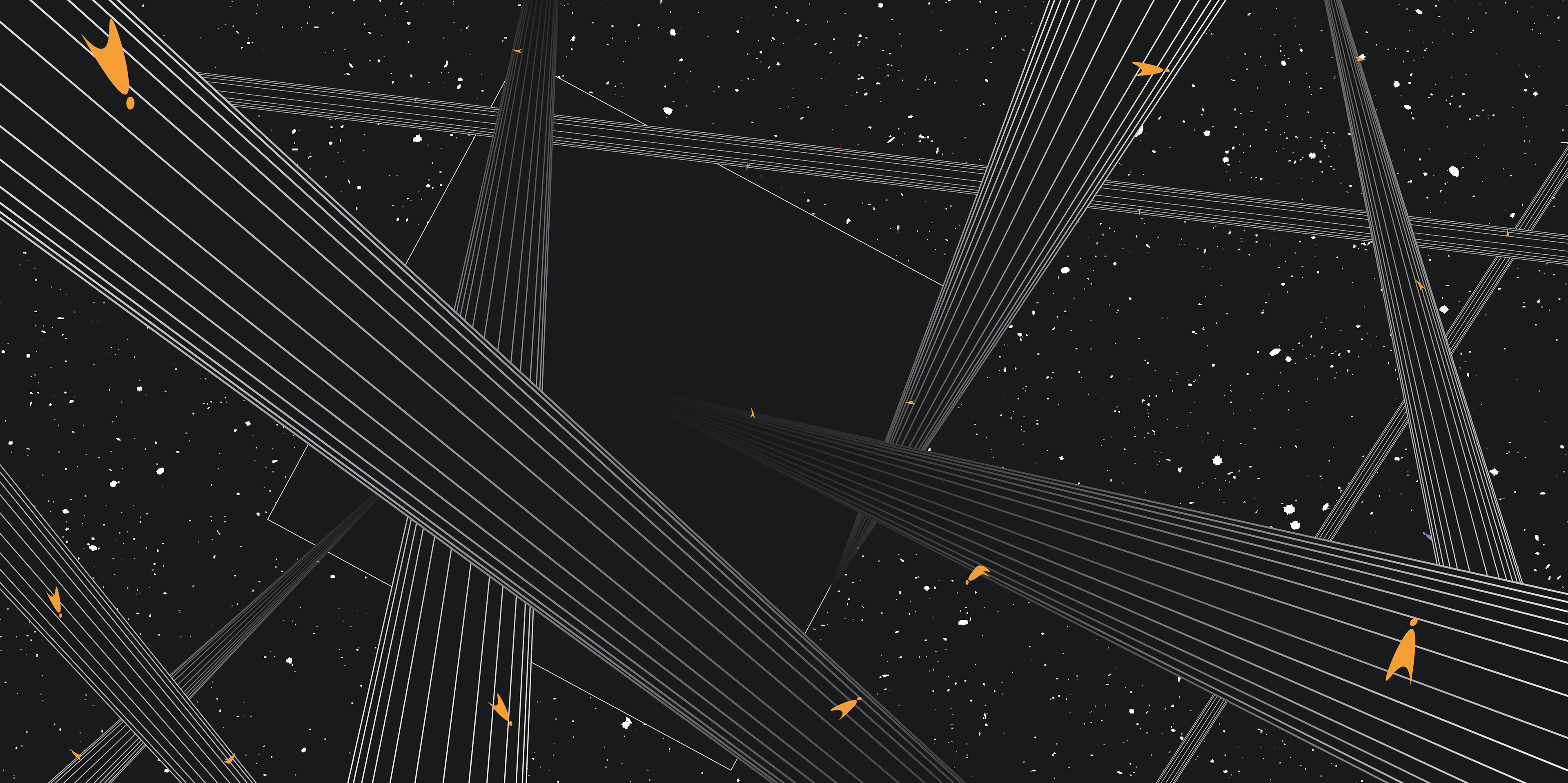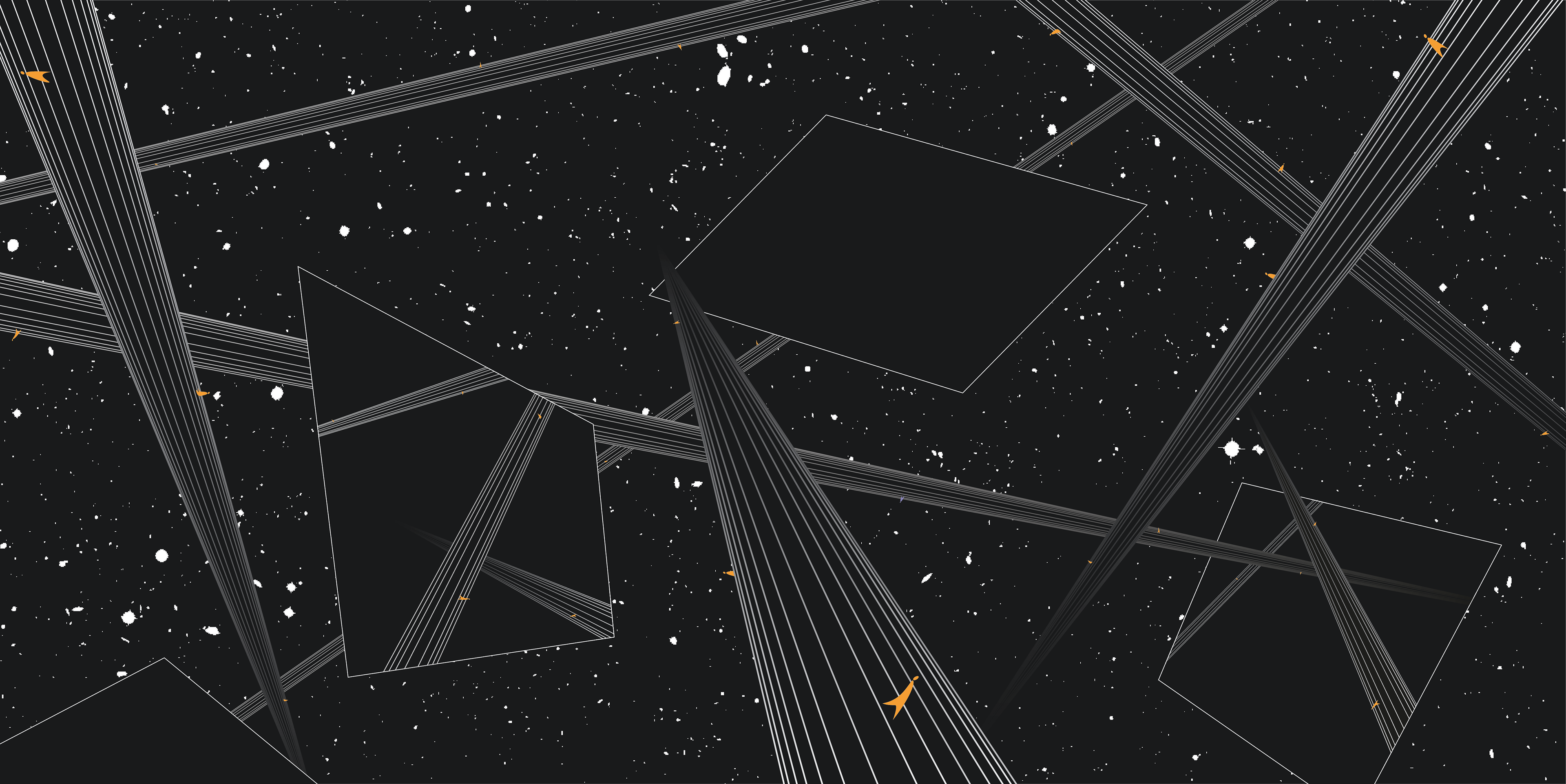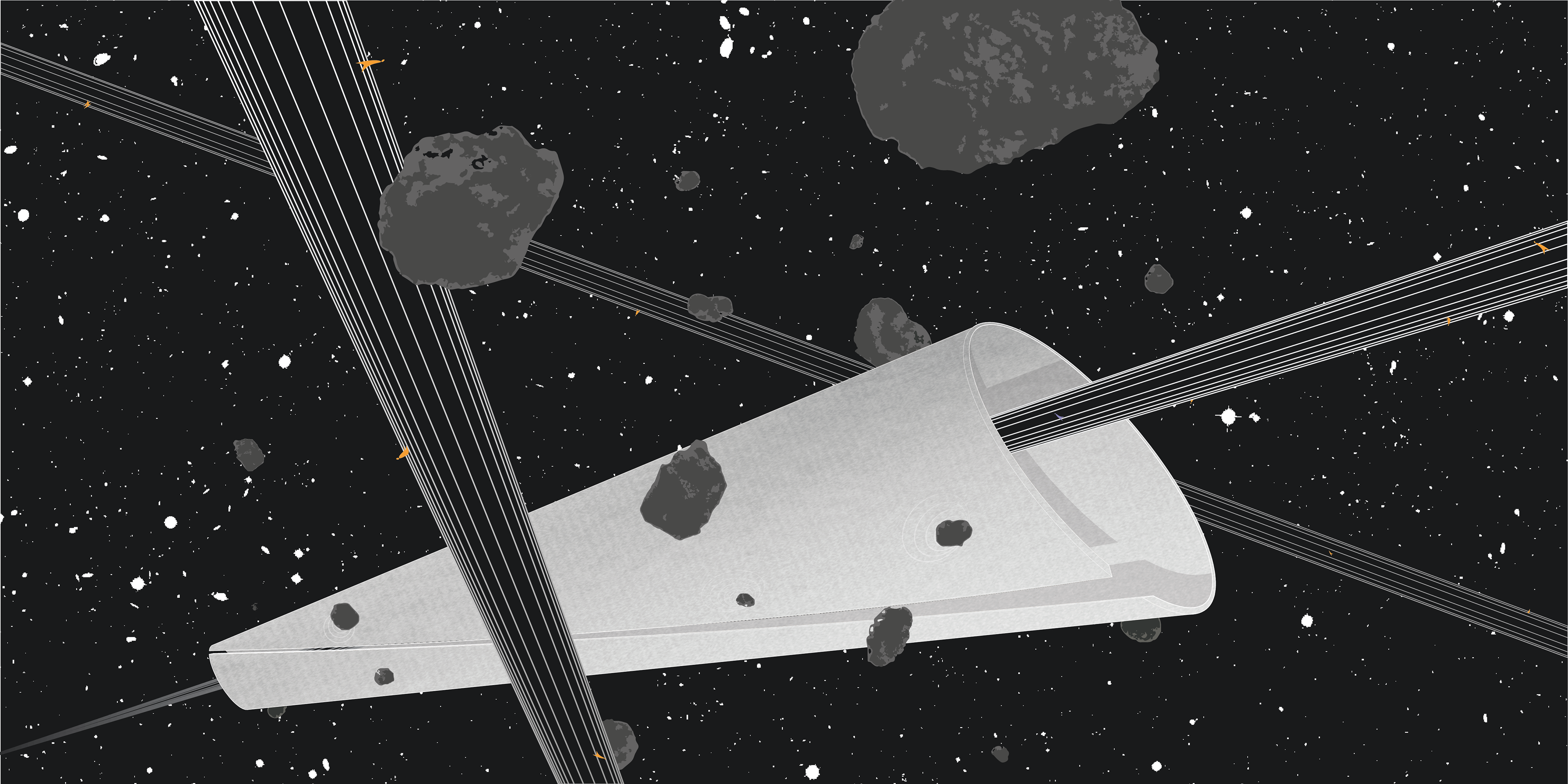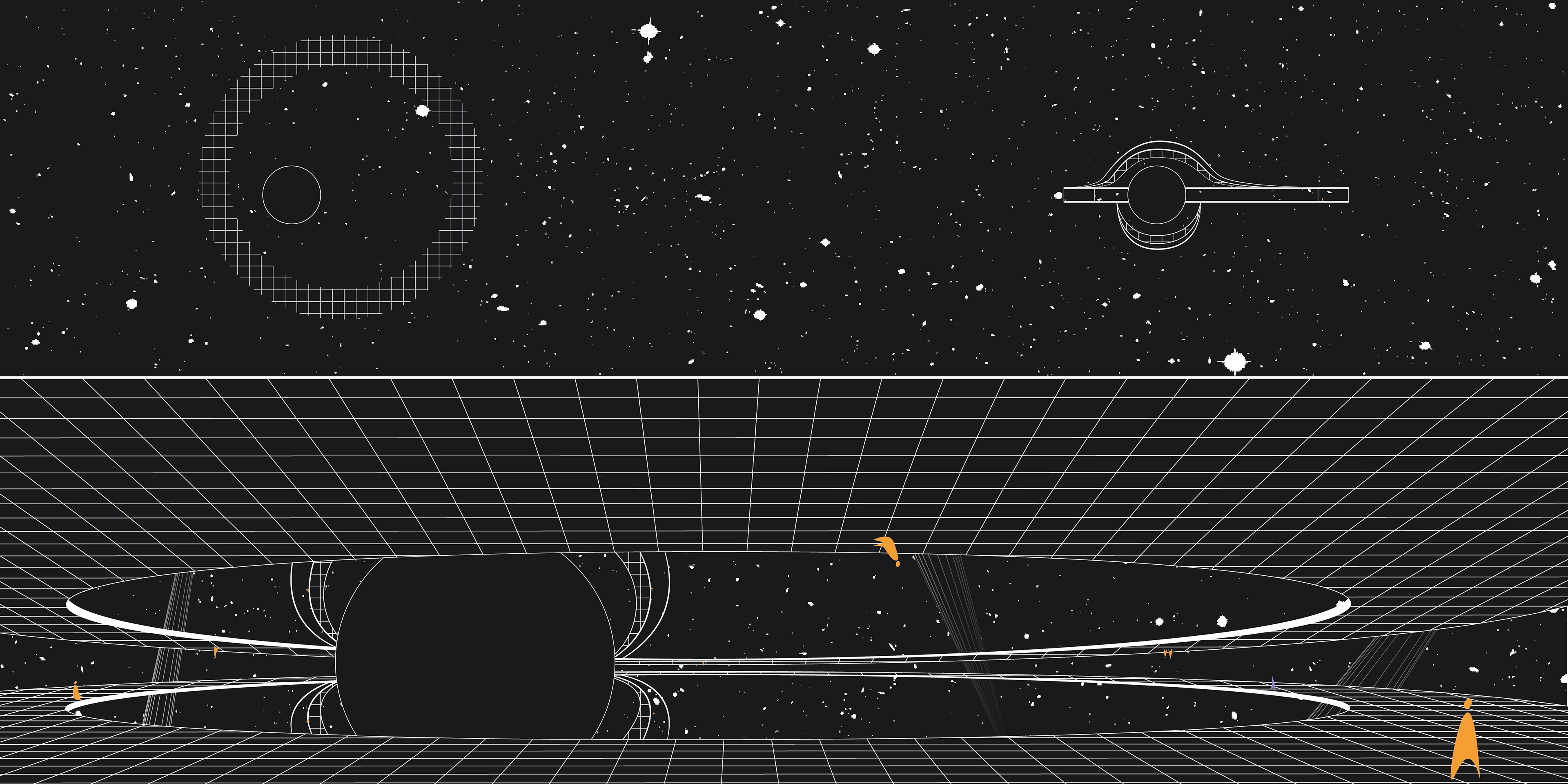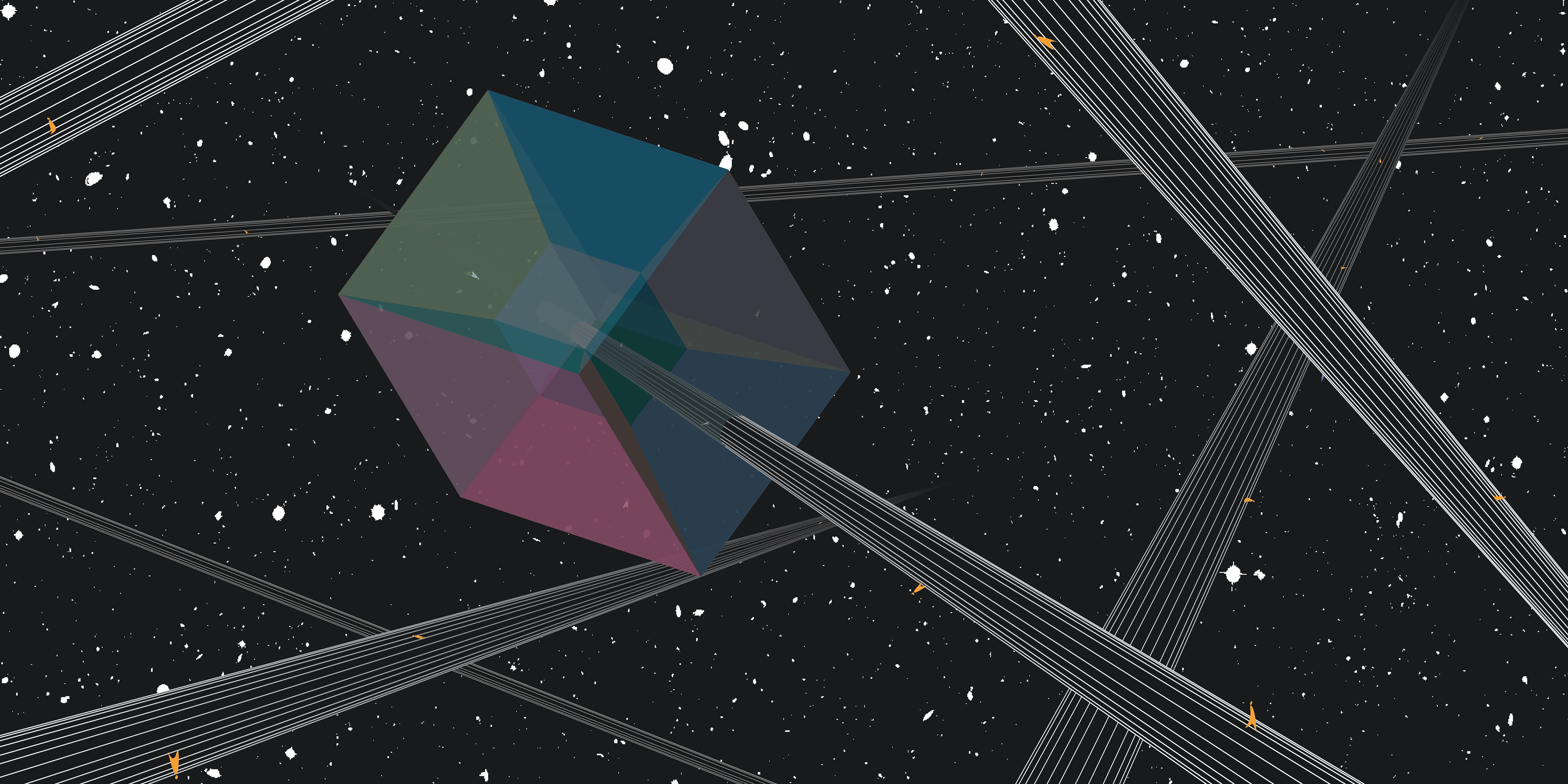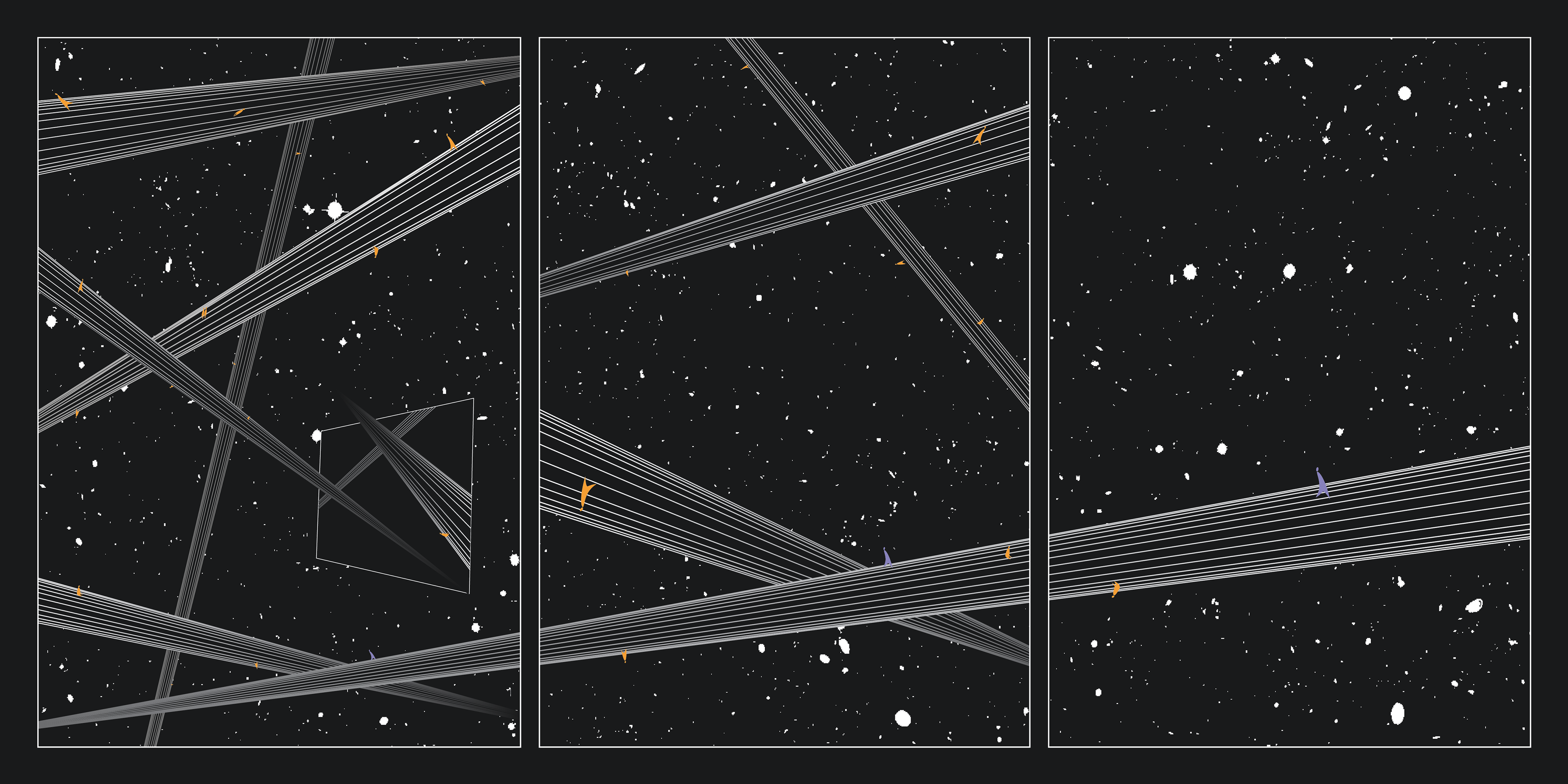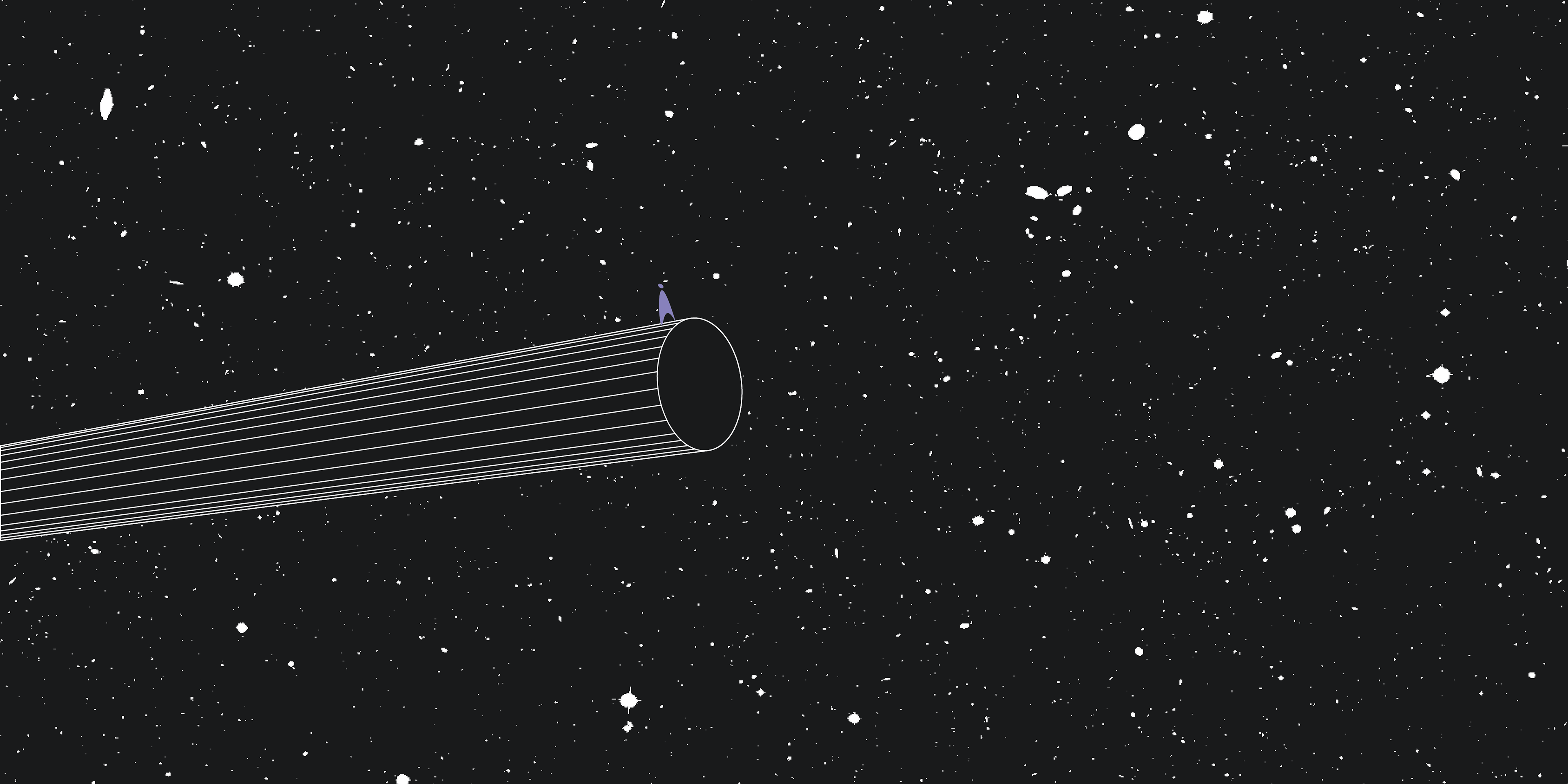Research submitted in fulfillment of the Architecture and Urbanism Bachelors at Escola da Cidade, under the supervision of Vitor Pissaia
Research on the concept of space in Architecture, resulting in a speculative design in Outer Space
São Paulo, Brazil, from september 2020 to august 2021
"Every architectural design is, before anything else, a fictional work, only to become reality once built."
Even though we exist in a three-dimensional world, much of our perception is contained within an essentially bidimensional perspective: of the three dimensions from which the axis system (x, y, z) is composed, we can only move on the x and y planes. Z is to us inaccessible, always requiring some sort of mechanism (stairs, ramps, elevators, etc.) to be reached.
This is not a random fact. We are tied to planet Earth by the force of gravity and in turn everything we create is also to it directly attached. Anyone who is born on planet Earth understands clearly the concepts of up and down: that which is closest to the sky is up while what is closer to the ground is, obviously, down.
Furthermore, we know that when referring to Planet Earth, space is finite. For instance: where land ends, the ocean begins; where elevation ceases, a descent begins to appear; where the forest ends, we find a field. Finitude is so natural to us that this rule can be extended also to abstract concepts and to our very cognition: life giving place to death, one country’s territory giving place to its neighbor.
Finitude and gravity form the unconscious basis for everything we produce, and when we consider Architecture, this conclusion could be no different. To think of a new form of architecture, we would need to shift our thought to a space free of earthly constraints, a space much better described by the rules governing Outer Space. In such a place, up or down, beginning or ending become meaningless concepts and spatial construction unlocks endless new possibilities. From this moment on we must consider new and often disregarded sets of references, such as those put forward by science fiction.
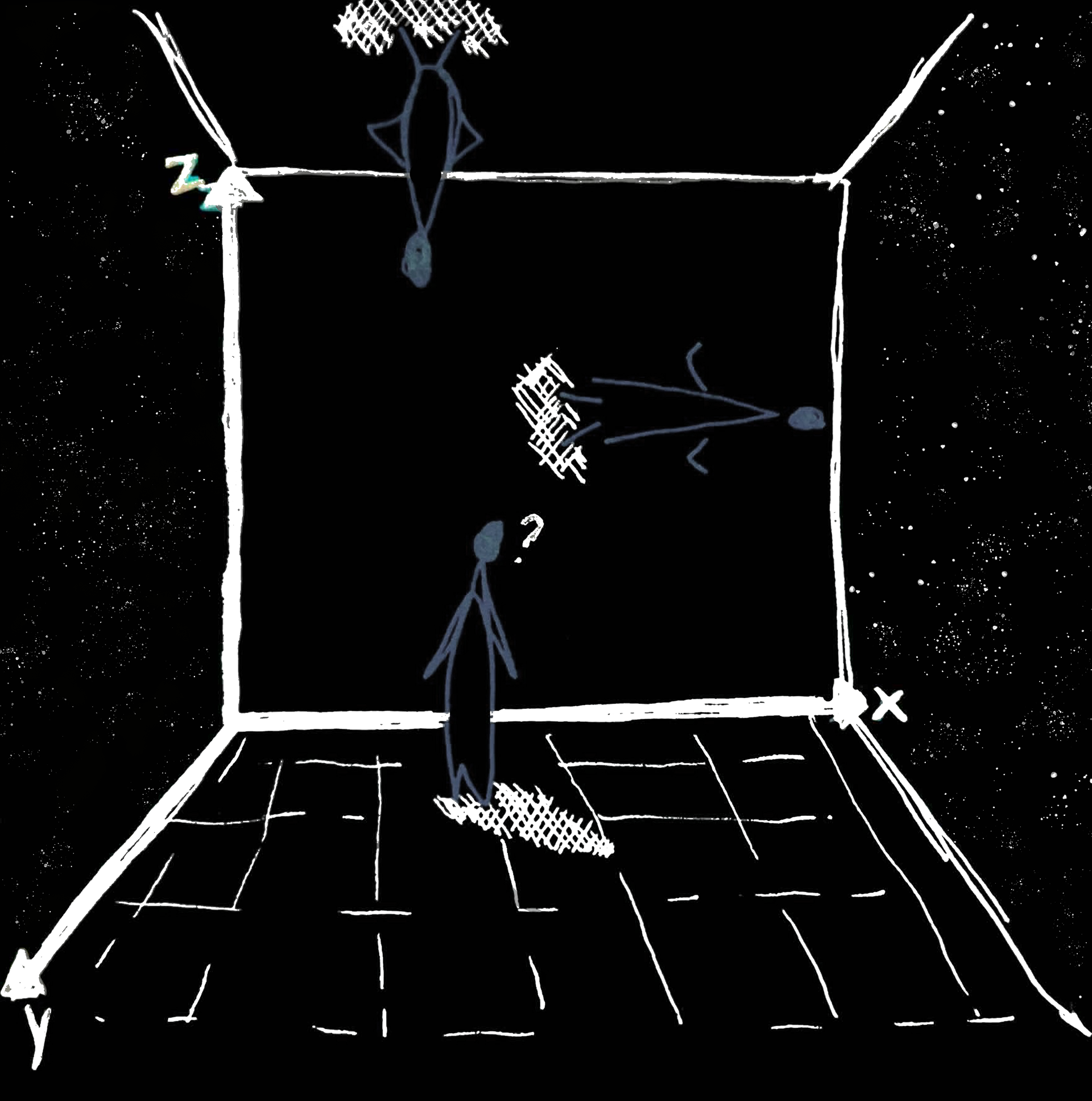

What could happen in this new space where everything is possible? What is the result of an architecture finally unbounded from its physical limitations?
These questions were the starting point of developing the project of a space in (Outer) Space. Because of its speculative and experimental nature, it was necessary to define at least a few concepts to direct the work to be done: Incognizability, Device and Disorientation. The result was that of a place lost in the vastness of Space
Represented in illustrations, the images and texts created during the research were compiled and printed as a booklet. Because one of the pillars of the project was, as stated, Disorientation, the text was arranged and laid out on the page in all directions, requiring the reader to continuously rotate the notebook while reading, making it so that there was no predetermined angle from which to look at the images, for in space there is no such a thing as the concept of up/down.
*
Throughout the year spent developing this project, I would some times write short texts describing this place as a visitor, in order to better organize my ideas. Even though they were not a formal part of the final result, some of these them had a vital importance the development of the project, so it seem also important to have one of them here:
"Many were the efforts made to map that place, to find its borders. It was only after generations that the dwellers noticed that everything would be in vain, that for the first time the human species wasn’t dealing with either a beginning or an end, it was neither north nor south.
It is impossible for one to know where one is.
The cylindrical routes that can be roamed along their full circumference, are perfectly similar and give no reference or indication of position, confusing and bending the individual’s sense of direction. To this is added the structures' slow movement, sometimes expressed as an axial rotation, others as a random wandering motion in space, and even as the orbiting of unknown points at one time. It can’t be known for sure what originates the movement of each of the routes, but together they form a dance, a carefully planned choreography avoiding even the slightest shock and allowing only enough approximation so that a person standing on one route could comfortably leap onto the next, and from then follow a totally unseen path.
A place such as this would be extremely monotonous, were it not for the infinite structures scattered along the endless tangled routes, each with their own materiality and bespoke relationship to the surrounding space. Those who inhabit this place will be found roaming the Canyons and the Hypercubes, leaping through the Windows and even observing the accelerated passage of time close to some Black Hole. There are even legends of an ending to the path, an edge of infinity.
No one knows how, when or by whom this place was built. Its name, if it ever existed, was completely lost in time. All that is known is that it was one day found and since inhabited, and all, from then on have only referred to it as Zero."
*
